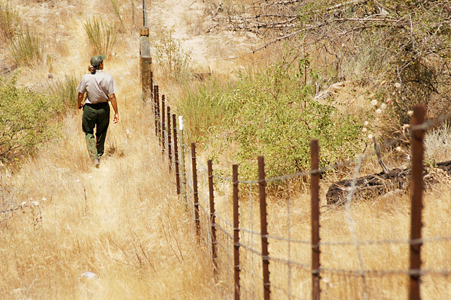
After 20 years, park staff finally eliminates destructive wild
snouters from the park
It took 20 years, but the Pinnacles National Monument is finally
free of wild pigs.
After 20 years, park staff finally eliminates destructive wild snouters from the park
It took 20 years, but the Pinnacles National Monument is finally free of wild pigs.
Since they were first introduced to the county, wild pigs have been a problem at the national park for their destruction to the environment. The feral pigs, a cross between European boars boars and domestic hogs, had competed with native species for food and disturbed the ground in their incessant search for bulbs, lizards, acorns, grasses and roots, making life for animals like deer – and staff members – a constant battle.
“They also eat lizards, birds, all sorts of invertebrates,” said Jim Petersen, chief biologist at the park. “Not only did they compete with native species for food, they outright consumed them.”
The pigs were first introduced in 1769 when Spanish explorers brought domestic swine into the area. As they were allowed to roam freely, the hog lines eventually went wild. In 1925, the problem compounded when European wild boars were imported to Monterey County for hunting sprees. The result was a hybrid that spread throughout California with the aid of hunting fans and landowners.
So the pigs aren’t native but wreck havoc on nearly all natural species. For the park it’s a serious problem, said Petersen, because of the rare, endangered and endemic species the park protects. Not only do the pigs eat some of these fragile species, they disturb all habitats around them. The hogs spend much time snouting through the dirt in search of food, not only taking sustenance away from other animals but causing soil erosion.
When they uproot or pull on plant roots, the plants have to work harder for water and usually succumb to the heat of the summer. The chicks of ground nesting birds are doomed if a wild pig comes across them.
“When they disturb the soils, they make it a good germinating ground for exotic (non-native) and noxious weeds (such as yellow starthistle),” Petersen said.
Wild pigs have a high reproductive rate and few predators. A sow can have two litters a year, with each litter producing 4 to 14 piglets.
In 1986 park officials took action by embarking on the building of a 32-mile fence around 14,000 acres of the park. The pig management program also included an extensive trapping and eradication of the pigs. The fence is designed to prevent pigs from rooting underneath, while allowing animals of various sizes to pass through, or jump over. In all, the project cost $2 million and took 20 years to complete – but now park staff can proudly declare the park is pig-free.
Even though staff uses non-lead bullets to kill the pigs, they do not feed the carcasses to their nascent population of endangered California condors. The condors are highly susceptible to lead poisoning and eat only carrion, but sometimes pigs can carry around shrapnel in them from other attempts at killing them.
“We never know if they hadn’t been shot at before, so no, we don’t feed them to the condors,” Petersen said.









